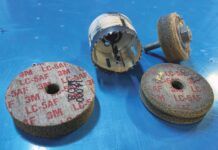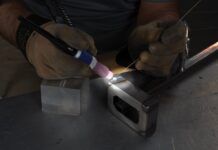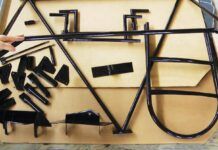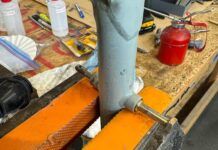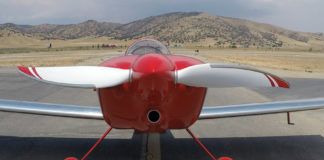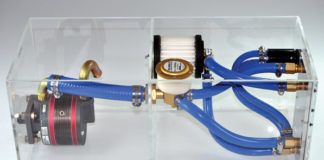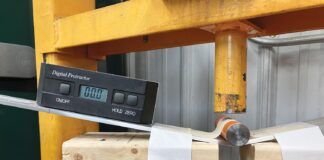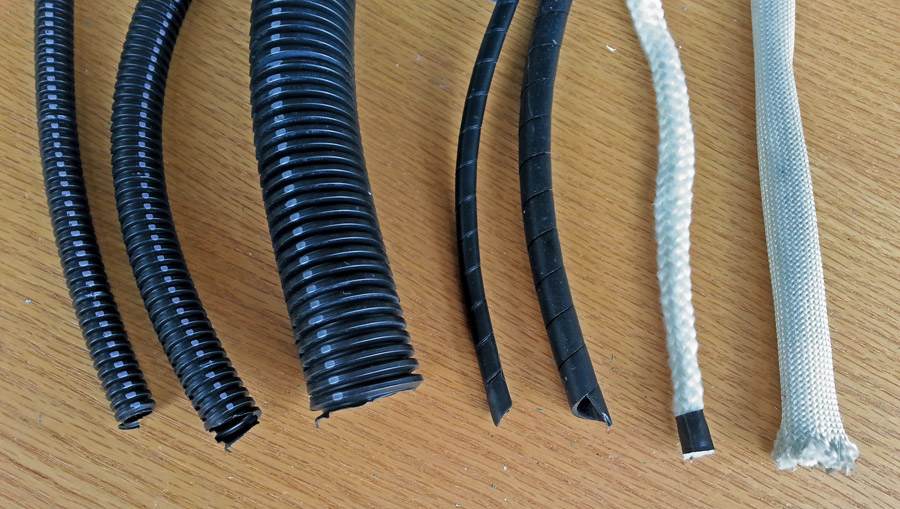
Above from left to right: Three sizes of slit corrugated sleeving (note the gray stripe indicating the material is nylon), two examples of spiral loom, and two sizes of fiberglass sleeving.
One noticeable difference in our Experimental aircraft from just 20 years ago is the demand we now place on electrical systems. Avionics, electronic engine monitoring, and navigational devices now require more abundant and complex wiring—much of that found in the engine compartment and behind the panel. Managing those bundles of small wires often takes more than just installing a strategic plastic wire tie if we desire the utmost in reliability from our electrical installations. A number of inexpensive, easy-to-install cable sleeves (looms) are available for use in homebuilt projects to protect and organize the wires that travel throughout the airframe. Many of these can be installed after the wiring is complete.
Among the most popular inexpensive products to protect wiring is slit corrugated sleeving. As the name implies, this plastic tubing is slit along its entire length, allowing you to install it with your wiring already in place—making for fast and easy installations. It ranges from 1/4 inch to about 1.5 inches in diameter, allowing you to choose the best size. It is typically less than a $1 per foot, so this critical protective component is not expensive.
Can it be used in your engine compartment? Here’s the catch: If you want the good stuff, with the high temperature rating, you need to get the type that is made from nylon, not the cheaper polyethylene variety. The nylon is good for 300 F, the poly variety for about 200 F. The nylon costs just a little more, and many manufacturers identify their nylon product with a gray stripe printed lengthwise.
The slit provides great benefits: Installation is simple without removing the cable, and the wires in a bundle can exit at any location along the path and go their own direction. The slit also allows the loom to expand in diameter, so you do not need a precise size to fit your cables. This type of sleeving can be used with clamps for a secure mount and can be easily labeled for identification.
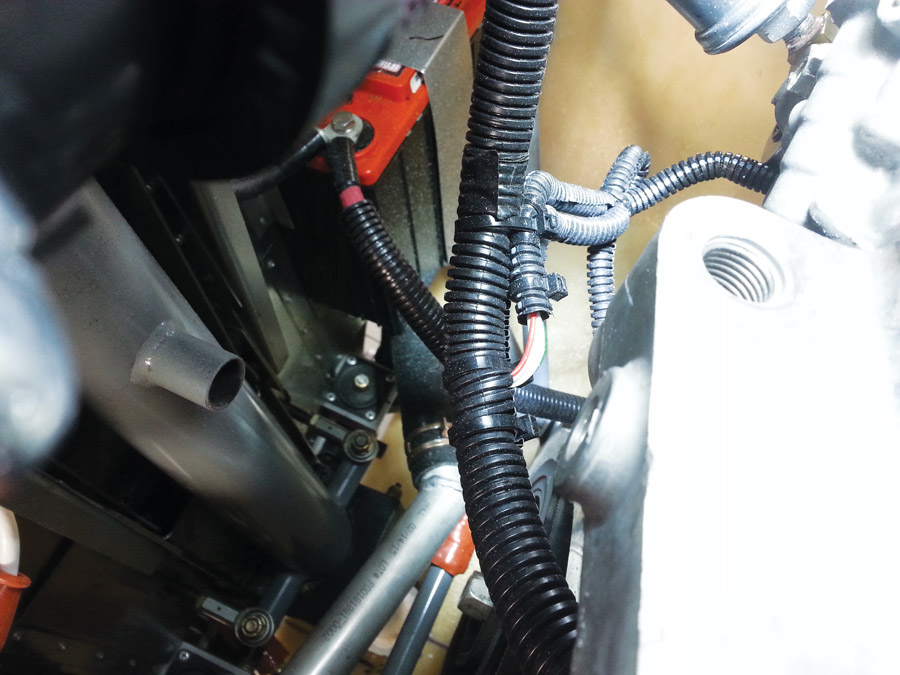
Slit corrugated sleeving allows wires from one bundle to split off into branch bundles, providing an organized, protected cable environment in the engine compartment.
Another type of cable loom is the spiral variety. This style also allows access to the cable between the spirals. It resists solvents and abrasion, is available in a UV-resistant option, and comes in a variety of colors. It is available in polyethylene or nylon.
For the ultimate in heat protection (1000 F), cables can be enclosed in fiberglass sleeving. These sleeves need to be installed before the wiring is connected. They are ideal for applications like EGT sensor leads that travel directly next to the exhaust manifold. They come in a variety of diameters and cost about a $1 or less per foot.
Where to buy these products? If you have difficulty locating these items at your favorite aircraft supply store, industrial supply companies like McMaster-Carr have large selections available.
Cable sleeving is easy to install and inexpensive; keep plenty of extra on hand. It’s never too late to review your wiring installation and add a sleeve where it may help protect or organize vulnerable wiring.

![]()
As the founder of HomebuiltHELP.com, Jon Croke has produced instructional videos for Experimental aircraft builders for over 10 years. He has built (and helped others build) over a dozen kit aircraft of all makes and models. Jon is a private pilot and currently owns and flies a Zenith Cruzer.


